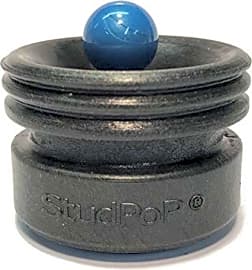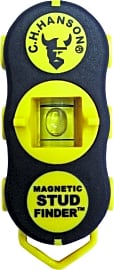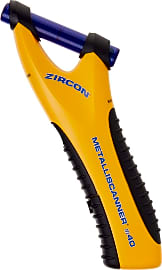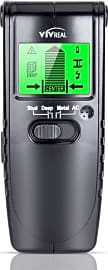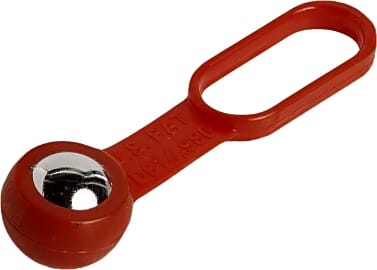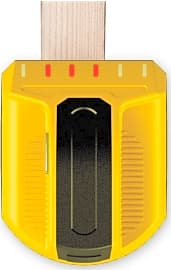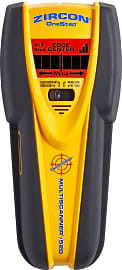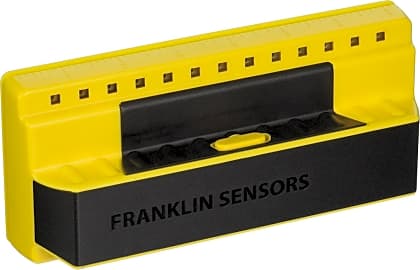The 10 Best Stud Finders

This wiki has been updated 40 times since it was first published in April of 2015. While it may not help you locate a hunk of a man, a good stud finder will guide you to a solid mount behind your drywall for hanging pictures and shelves. Many also offer other scanning modes that can help ensure you avoid dangerous wiring and sensitive pipes. Check out our comprehensive selection to find the right model for your next project. We've included both consumer and professional units. When users buy our independently chosen editorial picks, we may earn commissions to help fund the Wiki.
Editor's Notes
November 21, 2020:
For this update, we removed the Tacklife DMS04, Bosch GMS120, and the Zircon OneStep i65-FFP, all of which had numerous reports of inaccurate stud reporting. Not only are inaccurate stud finders inconvenient, but they can also result in unnecessary damage to your walls.
To provide a balance of low-tech options, we added two new practical stud finders that rely solely on extra-strong rare earth magnets, The StudBuddy Plus and the Rack-A-Tiers 52300. These don't have the digital readouts of other models, but since you're not relying on the tool itself to analyze information, they have much lower instances of false positives.
Even a basic understanding of how studs are placed behind your walls will dramatically increase your success rate, and can help you recognize false readings from your stud finder. Wall studs, essentially, are the vertically placed wooden 2x4s that make up your home's framing. The purpose of the stud finder is to tell you where these studs are placed, so you can screw through the exterior drywall, and into the stud itself. Mounting to studs is much more sturdy than drywall alone, which is extremely brittle, and isn't recommended for anything weighing more than 5-10 pounds.
Depending on what you're installing to your stud, you'll need a way to sink those screws in place. This collection of cordless drills should provide you with a variety of options to choose from.
Also, if you're planning on installing some new shelving, wall mounted shelves might be a good choice. These floating shelves don't take up any floor space, and are designed to be safe and securely mounted to your walls.
April 24, 2019:
Finding a stud is vital for the safe hanging of heavy objects, shelves, and other items. All of the models on our list are reliable enough to identify the location of a stud for you, but some offer additional features that can make your job safer and easier. For example, the Black & Decker BDL190S, Zircon MultiScanner i520-FFP, Bosch GMS120, Vivreal VIVSF-01, along with a few others on the list, can all find live AC wiring, ensuring you don't get an unpleasant shock when hammering a nail into the wall. If you are concerned about a low battery interfering with your ability to find a stud, you may want to consider the Studpop 100480-SP and CH Hanson 03040, both of which rely on a magnet instead of electrical sensors to identify the fasteners used when installing studs. The Black & Decker BDL190S and CH Hanson 03040 feature handy levels, making them ideal for use when hanging frames or shelves that need to be straight. We also wanted to make sure we included some affordable models for those on a tight budget, such as the Studpop 100480-SP, Franklin ProSensor T6, and CH Hanson 03040.
Classifications Of Stud Finders
The relative permittivity of a wall changes when there is a stud behind it.
There are two main classifications of stud finders: magnetic and electronic. Magnetic stud finders make use of a magnet to locate metal, often a nail or screw inserted during installation, inside of walling material. As the stud finder moves closer to the metal object, the pull on its internal magnet gets stronger, signalling that a stud is located beneath the wall. Unfortunately, sloppy construction can result in installation screws and nails being off-center or near the edges of a stud, so despite the detection of a stud when using a magnetic stud finder, one can not be sure that spot is suitable for anchoring heavy objects.
Magnetic stud finders can be further broken down into two types: stationary and moving. Stationary stud finders rely on the user to feel the pull of the magnet inside the unit, which means they can be erratic and hard to use. If the metal object is located deeply inside the stud, the pull might not be strong enough for the user to notice. Moving magnet stud detectors are considerably more effective. These make use of a neodymium magnet, which is suspended in an enclosure. The magnet can move around freely inside of the enclosure and always returns to a centered home position when not located near a metal object. As the user moves a magnetic stud finder over a wall, the magnet will move towards the location of the metal and will make a distinct thud as it hits the wall of the enclosure. This signals to the user what direction they should move and makes it easier to find a stud.
Electronic stud finders, also known as internal capacitor stud finders, are considerably more accurate than any type of magnetic detector. They make use of sensors, which can detect changes in the relative permittivity, or dielectric constant of a wall. The relative permittivity of a wall changes when there is a stud behind it. A lower reading means there is a stud in the wall. Many electronic stud detectors come with additional features for locating metal and live AC voltage.
Electronic stud finders can also be further broken down into types. There are instant finders, edge finders, and center finders.
Types Of Electronic Stud Finders
Each type of electronic stud finder is ideally suited for a specific task. Edge finders are the most basic as they only take one reading to determine the presence of a stud. They achieve this by detecting the change in density when the user moves it from an empty section of wall to one with a stud behind it. Edge finders require calibration over an empty section of wall before they can be used to find studs. If the user is unsure of the location of an empty section of wall, they will not be able to calibrate the edge finder and it is essentially useless. Because edge finders only use one sensor, they are more prone to errors than center finders and instant finders. There is always a chance that it could indicate a spot more than an inch from the stud's edge.
There is always a chance that it could indicate a spot more than an inch from the stud's edge.
A more efficient way to locate the center of a stud is with a center stud finder. These use two sensors to register separate measurements of the wall's relative permittivity. Once the two readings match, it signals that the stud's center has been located. Center stud finders do not need to be moved in both directions over a stud to determine the center as edge finders do to locate an edge, but they do also require calibration over an empty section of wall.
The most recent innovation in types of stud detectors is the instant stud finder. These have multiple sensor plates, which take numerous readings simultaneously and are not hindered by erratic wall textures as center stud finders often are. Nor does the user need to sweep them over broad sections of a wall. They make use of the multiple readings and an algorithm to find the the center and edges of studs, and which regions of the wall has studs and which regions do not. Instant stud finders can also detect the location of multiple studs at once and indicate the width of found studs.
Invention Of The Stud Finder
It is believed magnetic stud finders have been in use since the early 20th century, but Richard D. Bray filed for, and was granted, a patent on February 15th of 1957. Electronic stud finders are a more recent invention, and were patented on July 25th, 1977 by Robert Franklin. His revolutionary design was the first of its kind to utilize an internal capacitor to measure changes in a wall's density.
Franklin tried selling the rights to produce internal capacitor stud detectors to a number of major tool companies, but they all turned him down. Finally, he approached the electronics manufacturer Zircon Corporation, who found it a worthwhile invention and agreed to produce and market the device. Until the patent expired in 1998, Zircon was the sole manufacturer of electronic stud finders.
Since the expiration of the patent, many other companies have started producing internal capacitor stud finders and are responsible for the continued development of the technology, such as the inclusion of an LED spotlight on the location of a stud. These new developments have made them more accurate, more efficient, and more popular than ever.


